|
 Secure Site
Secure Site
|
 |
Archive for the 'mindfulness practice' Category
 Once you experience the Zen Timepiece's progressive tones, you'll never want to meditate any other way. There’s nothing like economic calamity to focus the mind. But instead of obsessing over your job security or declining 401(k) balance, try diminishing your stress with a new assist from a very old tool: meditation.
Stretching back thousands of years to ancient spiritual traditions, meditation has been attracting a growing following of secular practitioners in recent years. While it’s still not exactly mainstream, data released in December by the National Center for Complementary and Alternative Medicine, an arm of the National Institutes of Health, show that 9.4 percent of adults surveyed in 2007 had tried meditation at least once during the previous 12 months, a significant increase from 7.6 percent in 2002. And 1 percent of children had zoned in, too.
Your choices are extensive—mindfulness meditation, transcendental meditation, and the latest trend, compassion meditation, are three of many approaches, each with a slightly different intent. Compassion meditation aims to foster a feeling of lovingkindness toward others, for example, while mindfulness meditation focuses on awareness and acceptance of the present moment.
Whatever the variation, certain basic elements are common to all forms of meditation. Comfortably seated, lying down, or even walking around, you focus your mind on your breath, a word, a mantra, an object—something specific—possibly for a few minutes but perhaps much longer, gently pushing away distracting thoughts. As you learn to stay focused, you experience a sense of calm. Your body relaxes. Your breathing slows. Your heart rate drops.
Many of those who practice meditation turn to it to help them deal with emotional stumbling blocks like stress and anxiety. It can also be used to change unhealthful eating habits or to battle substance abuse. And studies continue to add to the ways in which meditation might be able to play a therapeutic role—for example, it has been shown to bolster HIV patients’ immune systems, ease chronic pain, and reduce blood pressure.
Gene control. New research has been taking these discoveries to a deeper level, revealing how meditation and other relaxation techniques work in cells, turning on and off genes that are associated with inflammation, cell aging, and free radicals, all of which are associated with damage to cells and tissues. French philosopher René Descartes famously believed that the mind and body were separate entities, but emerging evidence is proving him wrong.
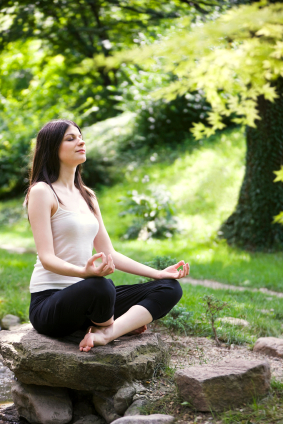 Once you experience the Zen Timepiece's progressive tones, you'll never want to meditate any other way. “What this shows is that you can actually change the brain with the mind,” says Herbert Benson, director emeritus of the Benson-Henry Institute for Mind Body Medicine at Massachusetts General Hospital. He is a coauthor of a study demonstrating such genetic changes that was published in July in the online journal PLoS One.
Meditation’s psychological and physical effects both are tied to the “fight or flight” response. When we are under stress, the brain sends hormones and other substances racing through our system to ready us for action. We become hyperalert, our heart rate and breathing speed up, our muscles tense, and our digestive processes shut down. While modern Americans are less likely to face physical danger than were our prehistoric, mastodon-hunting ancestors, there’s no shortage of other sources of stress. High-pressure, overbusy lives, coupled with the unrelenting economic uncertainty of much of the past year, can put the body in a constant state of hypervigilance. That’s not good. An ongoing state of revved-up alertness can damage tissues and organs, suppress the immune system, and cause anxiety and depression.
Mental workout. The calm that meditation engenders produces physical and emotional changes that represent the flip side of fight-or-flight. For those with overtaxed lives, a bonus of meditation is that a little of it apparently goes a long way. One study of individuals who were new to meditating showed measurable brain and behavior differences after just two weeks of daily 30-minute sessions, says Richard Davidson, director of the Waisman Laboratory for Brain Imaging and Behavior at the University of Wisconsin-Madison. But meditation is like any other workout: To reap the benefits, don’t stop. “This is mental exercise,” says Davidson. “If one wants [benefits] to continue, you have to continue.”
Experts and practice centers that can serve as sources ofmeditation training are becoming easier to find. One of the best known and most studied programs is the Mindfulness-Based StressReduction Program, which started at the University of Massachusetts Medical School nearly 30 years ago and is now offered by certified instructors at centers around the world. (You can see if there is one in your area atumassmed.edu/cfm/mbsr.) The program brings together a group of people once a week for eight weeks to learn sitting and walking meditation practices and gentle yoga stretches. For those who would rather learn on their own, books, tapes, and CDs are available from Jon Kabat-Zinn, founding executive director of the Center for Mindfulness in Medicine, Health Care, and Society at the University of Massachusetts and creator of the MBSR program, at mindfulnesstapes.com. They can help do-it-yourselfers learn the ropes.
 It serves as the perfect meditation timer. Available in 5 wood styles, including bamboo. No amount of meditating can magically erase the stress of losing a job or a loved one. But it can help people cope. “It can transform the emotional brain in ways that promote higher levels of resilience [and] less vulnerability and affect the body in ways that can improve health,” says Davidson. All that for just minutes a day? Even a shellshocked investor would have to admit: That sounds like a good deal.
By MICHELLE ANDREWS for US News
Use our unique “Zen Clock” which functions as a Yoga & Meditation Timer. It features a long-resonating acoustic chime that brings your meditation or yoga session to a gradual close, preserving the environment of stillness while also acting as an effective time signal. Our Yoga Timer & Clock can be programmed to chime at the end of the meditation or yoga session or periodically throughout the session as a kind of sonic yantra. The beauty and functionality of the Zen Clock/Timer makes it a meditation tool that can actually help you “make time” for meditation in your life. Bring yourself back to balance.
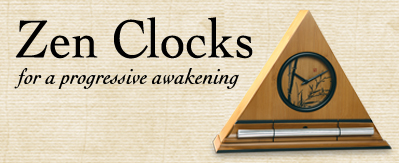 It serves as the perfect meditation timer. Available in 5 wood styles, including bamboo. Now & Zen – The Acoustic Chime Meditation Timer Shop
1638 Pearl Street
Boulder, CO 80302
(800) 779-6383
orders@now-zen.com
Posted in Meditation Tools, mindfulness practice
 It's exquisite sounds summon your consciousness out of your meditative state with a series of subtle gongs. Once you experience the Zen Timepiece's progressive tones, you'll never want to meditate any other way. It serves as the perfect meditation timer. Set aside 30 minutes, preferably at the end of the day, to try this Naikan practice.
Sitting comfortably, with eyes closed, take a few moments to bring attention to your breath, mantra, or any other technique that you normally use to center yourself. When you feel settled, ask yourself this series of questions:
What have I received today?
Be specific and reflect on as many things as you can recall. It can be something as simple as your partner’s smile, the sound of a bird singing at dawn, the driver who let you merge into the crowded freeway. Remember, the motivation or attitude of those who gave you something is not the issue. Maybe you were offered lunch because you showed up at lunchtime, not because your friend made a personal effort to make you lunch. The fact is, you were fed, and you can feel gratitude for that. The mere fact that you benefited from someone’s actions is all that is needed to cultivate gratitude.
Notice which of these things you did not appreciate as they happened. Can you recall what was taking your attention when one of these acts of grace occurred? Were you stuck in problem-solving mode, thinking of your to-do list, or making judgments?
We often live as if the world owes us. As you reflect on what you have been given today, you will likely see that, if anything, you owe the world an insurmountable debt. This insight is more than merely humbling; you may find yourself feeling a deeper sense of gratitude and a natural desire to be generous in serving others.
What have I given today?
 This unique "Zen Clock" features a long-resonating acoustic chime that brings the meditation session to a gradual close, preserving the environment of stillness while also acting as an effective time signal. Go through the day’s events in the same way, but this time notice what you have given to others. Be as specific and concrete as possible. As above, your motivation is irrelevant. What did you actually do? It may have been as simple as feeding your cats, washing the breakfast dishes, or sending a friend a birthday card. You may find that without great fanfare you contribute to the well-being of many people and animals—you make a positive difference to the planet.
What difficulties and troubles did I cause today?
Again, be specific. Don’t overlook the seemingly insignificant. Your list may include things like “I backed up traffic while looking for a place to park” or “I chased the cats off the lounge chair so I could sit there.” This question is often the hardest, but its importance cannot be overstated. It may bring up feelings of remorse, but its primary purpose is to provide a more realistic view of your life.
 Now & Zen’s mission is to participate in the emerging movement in society toward a more spiritually focused lifestyle. In general, we are all too aware of how others cause us inconvenience or difficulty, but rarely do we notice when we are the source of inconvenience. And if we do, we usually brush it aside as an accident, not that big a deal, or simply something we didn’t mean to do. We cut ourselves a huge length of slack! But seeing how you cause others difficulty can deflate your ego while reminding you again of the grace by which you live.
These questions provide the framework for reflecting on all your relationships, including those with family, friends, co-workers, partners, pets, and even objects. You can reflect on the events of one day, a specific person over the course of your relationship, or a holiday visit with family.
Remember, what makes this a meditative practice is that you are not analyzing your motivations or intentions; you are not interpreting or judging. You are simply shifting your attention from self-centered thinking to seeing things as they are, and as all yoga traditions point out, in seeing, there is wisdom and liberation.
adapted from Yogajournal.com by By Frank Jude Boccio
Although meditation can be done in almost any context, practitioners usually employ a quiet, tranquil space, a meditation cushion or bench, and some kind of timing device to time the meditation session. Ideally, the more these accoutrements can be integrated the better. Thus, it is conducive to a satisfying meditation practice to have a timer or clock that is tranquil and beautiful. Using a kitchen timer or beeper watch is less than ideal. And it was with these considerations in mind that we designed our digital Zen Alarm Clock and practice timer. This unique “Zen Clock” features a long-resonating acoustic chime that brings the meditation session to a gradual close, preserving the environment of stillness while also acting as an effective time signal. The Digital Zen Clock can be programmed to chime at the end of the meditation session or periodically throughout the session as a kind of sonic yantra. The beauty and functionality of the Zen Clock/Timer makes it a meditation tool that can actually help you “make time” for meditation in your life.
 Now & Zen’s mission is to participate in the emerging movement in society toward a more spiritually focused lifestyle.
 Rather than an artificial recorded sound played through a speaker, the Zen Clock features an alloy chime bar similar to a wind chime. Now & Zen – The Meditation Timer Shop
1638 Pearl Street
Boulder, CO 80302
(800) 779-6383
Orders@now-zen.com
Posted in intention, Meditation Timers, Meditation Tools, mindfulness practice
 It's exquisite sounds summon your consciousness out of your meditative state with a series of subtle gongs. Once you experience the Zen Timepiece's progressive tones, you'll never want to meditate any other way. It serves as the perfect meditation timer. Think meditating requires the patience, dedication, and endless free time of a Tibetan monk? Here are three simple ways to work this mind-calming, heart-strengthening discipline into your daily routine, no matter how confirmed a type A you are.
Walking Meditation Focus on your breathing; count your steps. Become aware of how your feet and legs move. Celebrate each movement as a miracle of silent communication between your brain and your body.
Mindfulness Concentrate all your energy on whatever you’re doing now, even something as mundane as washing dishes. Consider each element of the activity as if you were moving in slow motion. If other thoughts interrupt, gently bring your mind back to your task.
Mantra In Sanskrit, man means mind and tra means deliverance. Repeating a mantra–a word, phrase, or sound–creates a sound vibration that could deliver you from worldly cares. Choose a prayer, word, or sound that invokes a spiritual feeling. Sit comfortably and breathe deeply as you chant it silently.
adapted from Prevention by By Sara Altshul
Although meditation can be done in almost any context, practitioners usually employ a quiet, tranquil space, a meditation cushion or bench, and some kind of timing device to time the meditation session. Ideally, the more these accoutrements can be integrated the better. Thus, it is conducive to a satisfying meditation practice to have a timer or clock that is tranquil and beautiful. Using a kitchen timer or beeper watch is less than ideal.
And it was with these considerations in mind that we designed our digital Zen Alarm Clock and practice timer. This unique “Zen Clock” features a long-resonating acoustic chime that brings the meditation session to a gradual close, preserving the environment of stillness while also acting as an effective time signal. The Digital Zen Clock can be programmed to chime at the end of the meditation session or periodically throughout the session as a kind of sonic yantra. The beauty and functionality of the Zen Clock/Timer makes it a meditation tool that can actually help you “make time” for meditation in your life.
 This unique "Zen Clock" features a long-resonating acoustic chime that brings the meditation session to a gradual close, preserving the environment of stillness while also acting as an effective time signal.
Posted in Bamboo Chime Clocks, Meditation Timers, Meditation Tools, mindfulness practice
 It's exquisite sounds summon your consciousness out of your meditative state with a series of subtle gongs. Once you experience the Zen Timepiece's progressive tones, you'll never want to meditate any other way. It serves as the perfect meditation timer. Available in 5 wood styles, including bamboo. Meditation as medication.
A federally funded study on hypertension conducted in West Oakland yielded positive results for the practitioners of transcendental meditation, a technique used to relax the body and the mind — and much, much more, say hardcore adherents.
Findings of the study were published Friday in the American Journal of Hypertension, a publication of the American Society of Hypertension Inc. The study was the work of a medical team led by Dr. Frank Staggers, a longtime Oakland physician who now works as a senior detox physician at the Haight Ashbury Free Clinic in San Francisco. Research for the project was conducted over a period of 10 years, starting in 1994.
The study comprised 150 people, whose average age was 49, who were divided into three separate groups and used separate techniques to try to reduce stress levels and lower blood pressure. One group practiced meditation, another used progressive muscle relaxation, and the third used conventional health and education techniques to lower blood pressure.
“I was working at the West Oakland Health Center in the 1980s when I made my first observations during the course of my patient examinations,” Staggers said. “I told my patients with hypertension to close their eyes, relax and take deep breaths.”
When Staggers began to notice a difference in the stress levels of his patients, he started digging a little deeper into relaxation techniques.
He contacted Dr. Robert Schneider, a colleague from Maharishi International University in Fairfield, Iowa, and the two put together a research team and sent a funding proposal to the National Institutes of Health. The NIH responded with a grant from its national Center for Complementary and Alternative Medicine.
Blood pressure, which is disproportionately high among African Americans, was monitored for a year in all three testing categories, Staggers said.
Transcendental meditation was chosen over other practices, such as Zen and religious meditation, because there were varying techniques and not nearly as much research data as had been collected on TM over the years.
 It features a long-resonating acoustic chime that brings your meditation or yoga session to a gradual close, preserving the environment of stillness while also acting as an effective time signal. “These techniques had a long track record and had been studied at some of the largest research universities in the nation, but they had never been studied with respect to treating disease,” Staggers said.
“As a practicing physician, I didn’t want to take a technique that no one has ever used, because you don’t know what will happen. TM has been studied since the 1960s.”
Of the three groups that participated in the study, meditation practitioners witnessed the reduction of 6 millimeters in diastolic pressure and a 3-millimeter drop in systolic blood-pressure readings.
There was also a 23 percent reduction in that group in the use of antihypertensive medications used to treat the disease.
Staggers said meditation has shown promise in helping reduce the symptoms of numerous physical and mental ailments, including asthma, depression, anxiety, cancer, diabetes and arthritis. He also said the technique can be an effective tool in the fight against drug dependency and addiction.
Joyce Muse-Harris, a nurse practitioner and Oakland resident who suffers from hypertension, took part it the study and heaps praise on how meditating for 20 minutes twice a day affects her health and outlook.
“I wanted to be in the meditation program because I’ve always believed in alternative medical techniques and haven’t always agreed with the techniques used in Western medicine,” she said.
The meditation sessions helped her reduce stress and “get a handle on some of the things that were happening in my life,” she said.
Muse-Harris used the techniques to deal with a colleague with whom she had a conflict. “After doing the meditation for a while, that person didn’t bother me anymore, because I decided I would not add to their stress,” she said.
Muse-Harris has gotten better at the technique and says she can now meditate just about anywhere — riding in a car or even on a BART train.
“At first it was difficult to do, but if you sit quietly, and let your mind relax, it will start running through all the errands you have to do, a shopping list, but if you don’t fight, those things fade away and your mind becomes clear,” she said.
Muse-Harris still takes hypertension medication but says the meditation provides her with an inner calm that keeps a lid on stressful reaction to challenging situations.
I must admit to a little skepticism about some the claims made by TMers over the years, particularly their description of mental-flying when a person achieves the highest state of the art.
The “yogic fliers” who sit in the lotus position and begin to hop around on foam cushions once they’ve reached a higher mental state always looked pretty suspicious to me, but this is a bit different.
If calming the mind in order to heal the body can be achieved through meditation instead of medication, I say go for it.
adapted from Sfgate.com by Chip Johnson
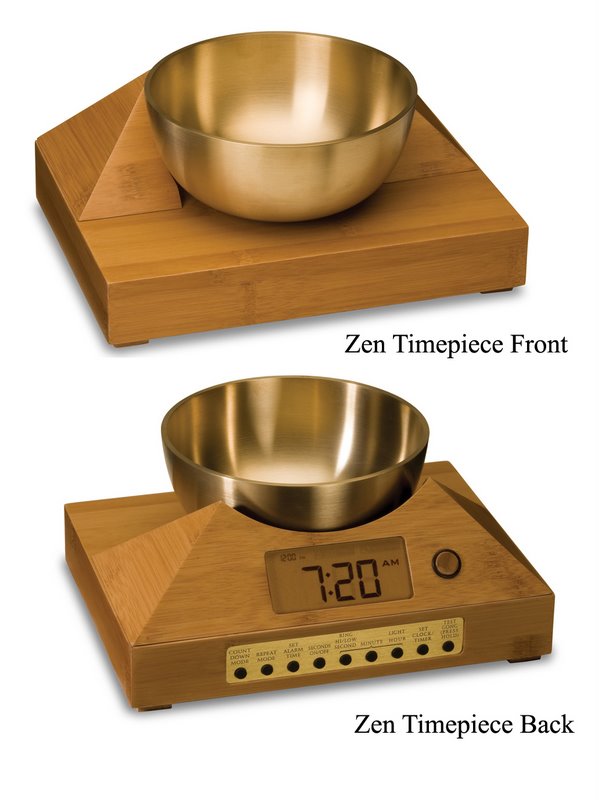 It features a long-resonating acoustic chime that brings your meditation or yoga session to a gradual close, preserving the environment of stillness while also acting as an effective time signal. Now & Zen – The Singing Bowl Meditation Timer Store
1638 Pearl Street
Boulder, CO 80302
(800) 779-6383
orders@now-zen.com
Posted in Bamboo Chime Clocks, Meditation Timers, Meditation Tools, mindfulness practice
 The Zen Alarm Clock transforms mornings, awakening you gradually with a series of gentle acoustic chimes Once you use a Zen Clock nothing else will do - KOITSU -- Full Moon at Akashi Beach If you’re tossing and turning and having trouble getting a good night’s sleep, you may want to consider meditation, researchers suggest.
People with primary insomnia reported that they slept better after trying meditation, according to a new study to be presented June 9 at SLEEP, the annual meeting of the Associated Professional Sleep Societies, in Seattle.
Primary insomnia is described as difficulty getting to sleep or staying asleep over a time period of at least one month, according to the U.S. National Institutes of Health.
While most insomnia occurs along with another physical or mental illness or disorder, or as a side effect of medications or other substances, primary insomnia occurs on its own.
In the study, researchers divided 11 participants aged 25 to 45 with chronic primary insomnia into two groups. One group participated in Kriya Yoga — a form of meditation that helps an individual focus internalized attention and can reduce arousal — as well as health education.
The other group received information about improving health through exercise, nutrition, weight loss and stress management but did not participate in meditation.
After two months, the meditation group reported improvements in sleep quality, how long it took to get to sleep, total sleep time, total wake time, sleep efficiency and depression, the researchers reported.
Primary insomnia is believed to be a problem of hyperarousal, with high levels of arousal noted 24 hours a day, said lead study author Dr. Ramadevi Gourineni, director of the insomnia program at Northwestern Memorial Hospital in Evanston, Ill.
“Results of the study show that teaching deep relaxation techniques during the daytime can help improve sleep at night,” Gourineni said in a news release from the American Academy of Sleep Medicine.
 Wake up refreshed, love your alarm clock, transform your mornings with The Zen Alarm Clock's progressive awakening with gentle chimes. About 9.4 percent of U.S. residents, or an estimated 20 million people, try meditating during a 12-month period, according to a 2007 study by the National Center for Complementary and Alternative Medicine. People reported using meditation for various health problems, including anxiety, pain, depression, stress and insomnia.
A 2007 review of the scientific literature found some evidence that meditation is associated with health benefits, possibly by causing heart rate and breathing to slow, improving blood flow and reducing activity in the sympathetic nervous system (the body’s fight-or-flight mechanism).
Boulder, Colorado—an innovative company has taken one of life’s most unpleasant experiences (being startled awake by your alarm clock early Monday morning), and transformed it into something to actually look forward to. “The Zen Alarm Clock,” uses soothing acoustic chimes that awaken users gently and gradually, making waking up a real pleasure. Rather than an artificial recorded sound played through a speaker, the Zen Clock features an alloy chime bar similar to a wind chime. When the clock’s alarm is triggered, its chime produces a long-resonating, beautiful acoustic tone reminiscent of a temple gong. Then, as the ring tone gradually fades away, the clock remains silent until it automatically strikes again three minutes later. The frequency of the chime strikes gradually increase over ten-minutes, eventually striking every five seconds, so they are guaranteed to wake up even the heaviest sleeper. This gentle, ten-minute “progressive awakening” leaves users feeling less groggy, and even helps with dream recall.
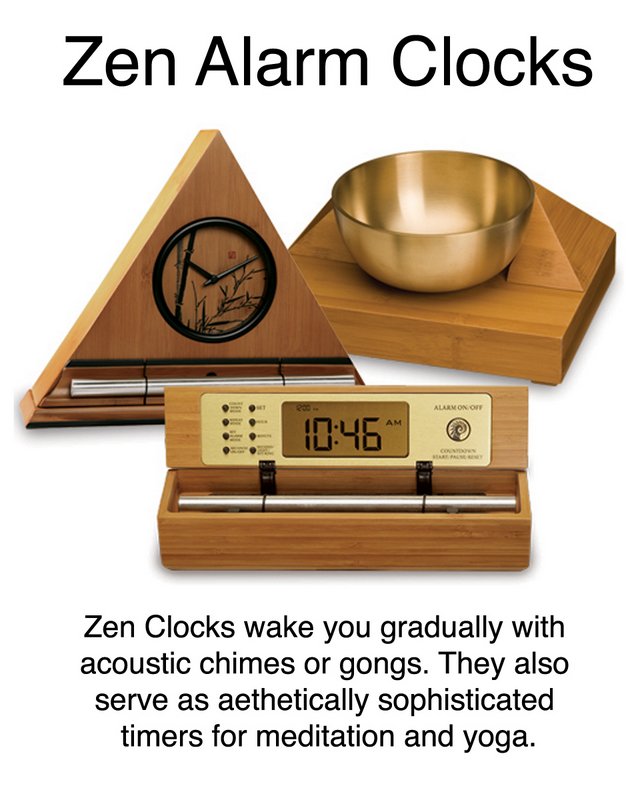 Wake up refreshed, love your alarm clock, transform your mornings with The Zen Alarm Clock's progressive awakening with gentle chimes. More information
The National Center for Complementary and Alternative Medicine has more on meditation and health.
Posted in Bamboo Chime Clocks, Meditation Timers, Meditation Tools, mindfulness practice
 The beauty and functionality of the Zen Clock/Timer makes it a meditation tool that can actually help you "make time" for meditation in your life. “Attentional-blink” occurs when two pieces of information are presented to a person in very close succession, and the brain doesn’t perceive the second piece of information because it is still processing the first. Richard Davidson and colleagues attempted to determine if intensive mental training through meditation could extend the brain’s limits on information processing, reducing “attentional-blink.”
The researchers compared two groups of people—17 expert meditators and 23 novices—to see if either was better at recognizing two pieces of information shown in quick succession.
The participants were tested at the beginning and end of a 3-month period. For the intervening 3 months, the meditation practitioners participated in a retreat, during which they meditated for 10-12 hours a day. The novices participated in a 1-hour meditation class, and were asked to meditate for 20 minutes a day for the week before each test.
The researchers found that intensive training did reduce “attentional-blink.” The participants who had gone through the mental training were more likely to perceive both pieces of information instead of just the first because the brain used fewer resources to detect the first piece of information—leaving more resources available to detect the second. The researchers also note that this study supports the idea that brain plasticity, or the ability of the brain to adapt, exists throughout life.
Use our unique “Zen Clock” which functions as a Yoga & Meditation Timer. It features a long-resonating acoustic chime that brings your meditation or yoga session to a gradual close, preserving the environment of stillness while also acting as an effective time signal. Our Yoga Timer & Clock can be programmed to chime at the end of the meditation or yoga session or periodically throughout the session as a kind of sonic yantra. The beauty and functionality of the Zen Clock/Timer makes it a meditation tool that can actually help you “make time” for meditation in your life. Bring yourself back to balance.
 The beauty and functionality of the Zen Clock/Timer makes it a meditation tool that can actually help you "make time" for meditation in your life. Bring yourself back to balance. adapted from National Center for Complementary and Alternative Medicine
 - “Mindfulness” is the spiritual practice of being aware of your present moment.
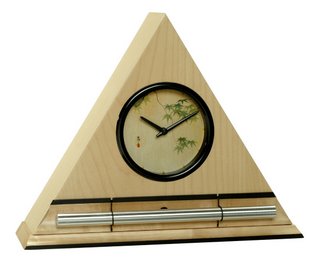 It features a long-resonating acoustic chime that brings your meditation or yoga session to a gradual close, preserving the environment of stillness while also acting as an effective time signal. Now & Zen
1638 Pearl Street
Boulder, CO 80302
(800) 779-6383
orders@now-zen.com
Posted in Bamboo Chime Clocks, Meditation Timers, Meditation Tools, mindfulness practice
 It's exquisite sounds summon your consciousness out of your meditative state with a series of subtle gongs. Meditation is easy in theory but fiendishly difficult in practice—unless you can give your mind a vehicle for moving inward.
There are decisive moments in the flow of every meditation session—moments of transition that either sustain the momentum of practice or impede it. One of these occurs early in the meditative process, soon after relaxing the body and making it comfortable. At this point the mind naturally begins looking for a more subtle focus to carry it inward. What will that focus be?
In yogic meditation, the answer is breath awareness. Breath awareness relaxes muscles and organs, calms the nervous system, and centers the mind. It sets the stage for a profoundly penetrating concentration, and ushers in a sense of peace and well-being. Breath awareness is to meditation what good lighting is to fine photography—not its final goal, but indispensable nonetheless. Meditation unfolds through breath awareness.
The art of breath awareness is more elaborate than most of us suspect. Breathing is an organic process, and its natural sensations result from the interaction of many elements—lungs, muscles, nerves, heart, and mind. In the early moments of meditation, breath awareness means bringing the rhythmic movements of respiration into awareness, then observing and shaping them. The more tuned we are to these natural sensations of breathing, the more effortless breathing becomes.
As time passes, breath awareness shifts to the relationship between breathing and the nervous system. These two are closely linked and respond to one another like best friends. When nerves are upset, breathing is affected; when breathing relaxes, so does the nervous system.
Finally, the flow of breathing is coordinated with the repetition of a mantra, relaxing and focusing the mind. Thus breath awareness becomes a means of using the breath as a support for concentration.
Let’s look at each of these three phases more closely.
 It features a long-resonating acoustic chime that brings your meditation or yoga session to a gradual close, preserving the environment of stillness while also acting as an effective time signal. Becoming the Witness
If you direct your attention to your breath, what exactly will you feel? Which sensations are the key to breath awareness? Pervading all the sensations of breathing is the experience that exhalation is cleansing, carrying away fatigue and tension; and that inhalation is nourishing, drawing in fresh energy. Observe this repeatedly. As time passes, each time you inhale, you will be able to sustain your awareness of the breath flowing in; each time you exhale, you will feel the breath flowing out. Firmly attach your awareness to these natural rhythms of breathing and you will notice a marked improvement in your concentration.
Once you are well connected to these rhythms, pay attention to the movements of your torso in more detail. These movements reflect the selection of muscles you are using to move air in and out of the lungs. The mechanics of breathing vary, depending on the posture of your body. If you are lying down on your back, you will feel the abdomen rise and fall. But if you are sitting erect, abdominal movements are much less noticeable. Instead, with each inhalation the ribs flare to the side, with only modest expansion of the upper abdomen. Exhalation is primarily a process of releasing muscle contractions and allowing the lungs to shrink to their normal size, although you may feel the abdominal muscles mildly contracting at the end of each breath.
Sit comfortably erect, close your eyes, and examine your breathing. Find the pace that feels natural and well suited to you. Relax the muscles of the abdominal wall all the way around to the spine in the back. Then let the sides of the rib cage expand laterally with each inhalation. Although there will be little movement in the front of the chest, don’t let yourself become bound by “rules” against chest breathing. Stick to the relaxed experience of breathing, and feel the natural expansion and contraction of your body with each breath.
As you continue, begin to weave one breath into the next. Don’t hurry—simply let the transitions from breath to breath be smooth and relaxed. Extended pauses in the breath distract the mind and disturb the nervous system. When these pauses are eliminated, each breath will satisfy you, and each will come at precisely the right moment.
After a comfortable and unhurried period of working with the breath (perhaps five or six minutes), the next step is to relax all effort. Breathing is normally effortless. It flows automatically, at the periphery of awareness. During meditation, you can return to effortless breathing, yet maintain awareness at the same time. To do this, continue resting your attention on the sensations of breathing, and at the same time, relax every mental effort. Your body breathes, and your mind relaxes. You are the transparent observer of your own breathing.
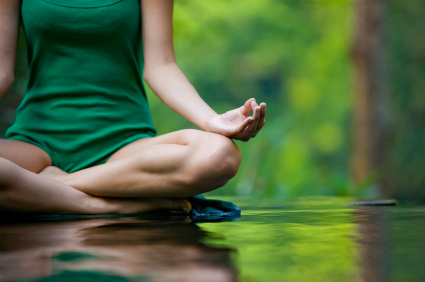 Our Yoga Timer & Clock can be programmed to chime at the end of the meditation or yoga session or periodically throughout the session as a kind of sonic yantra. Breathing is influenced by a variety of factors. Pleasant and unpleasant emotions, stress, pain, and even everyday movements alter the way we breathe. Laughter, for example, is a unique form of breathing. So are sighs, sobs, and the sharp inhalations that mark moments of sudden anxiety. Stress can have deep-acting effects, embedding itself in the fabric of the breath. Efforts to defend against chronic pain often restrict breathing, while intense pain may make the breath wildly erratic. Even bending over to tie your shoes can distort the movements of your breath.
Because the muscles of respiration are skeletal muscles, they can be controlled voluntarily. This means that you can make adjustments in breathing, reversing or at least relieving some of the effects caused by stress, pain, and negative emotions. That is one of the aims of breath awareness—the restoration of deeply relaxing patterns of breathing.
Ultimately, however, breath awareness is not so much about correcting breathing patterns as restoring the ability to witness them. Watching the breath comes naturally with a modest amount of practice. Once you are able to simultaneously relax your breathing and observe it, breath awareness will introduce you to deeper levels of yourself.
Calming the Nervous System
Painful thoughts, negative emotions, and stressful reactions inevitably arise during meditation. Having become rooted in the mind, they emerge in our practice. As we have seen, breath awareness gives us the ability to meet these distractions with less reactivity. The key is to feel the tension between relaxed breathing and these negative influences, and to choose (remember, breathing can be voluntary) to maintain a steady, relaxed flow of breath when meeting them. Even a little disturbed breathing is enough to get your heart racing and nerves tingling. Conversely, the ability to preserve relaxed breathing reestablishes a sense of self-acceptance and self-control. This calms the nervous system and creates a shift toward inner balance. It also brings us back into the present moment rather than allowing us to become enmeshed in images of the past or fantasies about the future.
Suppose, for example, that during meditation the thought of a painful work conflict arises. This thought reflects an entire array of associations, emotions, and behaviors (perhaps you’ve been avoiding meeting with a colleague for some time now). Here in meditation, nonetheless, it’s just you and your thought—meeting on the plains of your mind. The conflict will need to be worked out, no doubt, but to do that effectively may mean living with it for a time. How can breath awareness help?
The cost of stressful reactions is that they give negativity a foothold in the nervous system, which is then translated into unpleasant symptoms. During meditation, breath awareness short-circuits this translation process. It does not eliminate the conflict, but helps prevent it from taking up residence. When breathing remains relaxed and a steady focus of attention, problems are not so easily oversold to the nervous system and are less likely to overwhelm us.
Breath awareness is associated in yoga with a particular function of the mind, a function variously described as the ability to be the inner witness of experience, to remain detached in the face of discomfort, and to act decisively. Breath awareness helps create distance between this observing self in us (the buddhi in Sanskrit) and our distresses. It does not suppress conflict, but helps us recognize that conflict is not the ultimate truth of experience. Therefore, practices like breath awareness that help awaken the buddhi are particularly strengthening.
Quieting the Mind
In its final stages, breath awareness leads to a profound meditative experience. It fortifies and deepens your concentration. This is accomplished in two steps: through the sensation of the breath moving within the nostrils, and the coordination of the breath with a sound or mantra.
When the focus is on the breath flowing within the nostrils, the object of concentration is a sense experience (touch). When the breath is linked to the repetition of a mantra, it serves as a transitional device to bring the mind to a focus entirely within itself—a mental sound. Experienced meditators feel the breath in the nostrils and recite the sound of a mantra at the same time. In this way, concentration is firmly anchored.
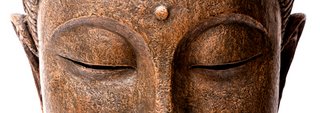 The beauty and functionality of the Zen Clock/Timer makes it a meditation tool that can actually help you "make time" for meditation in your life. Bring yourself back to balance. In the early stages of meditation (both in a particular meditation session and in the meditative learning process, in general), the mind is easily distracted. At that time, awareness of breathing acts like a set of training wheels on a bicycle. It allows the mind to focus, but remains ready to catch the mind if it loses its balance. The unbroken flow of breathing also prompts the mind to weave one mantra repetition into the next. As with the breath, when the sound of one mantra repetition ends, the next one begins.
With practice, the repetition of a mantra will supplant awareness of the breath. This is the inevitable direction of the meditation process. Yet slipping into the background of meditation, breathing will have performed many important functions. It is only after this work is complete that the mind turns further inward, resting in the pulsation of the mantra alone.
Use our unique “Zen Clock” which functions as a Yoga & Meditation Timer. It features a long-resonating acoustic chime that brings your meditation or yoga session to a gradual close, preserving the environment of stillness while also acting as an effective time signal. Our Yoga Timer & Clock can be programmed to chime at the end of the meditation or yoga session or periodically throughout the session as a kind of sonic yantra. The beauty and functionality of the Zen Clock/Timer makes it a meditation tool that can actually help you “make time” for meditation in your life. Bring yourself back to balance.
Rolf Sovik, PsyD, is co-author of Yoga: Mastering the Basics and is the director of the Himalayan Institute of Buffalo, New York.
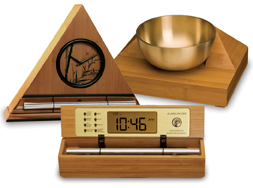 It's exquisite sounds summon your consciousness out of your meditative state with a series of subtle gongs. Once you experience the Zen Timepiece's progressive tones, you'll never want to meditate any other way. It serves as the perfect meditation timer. Available in 5 wood styles, including bamboo. Now & Zen – The Meditation Timer & Alarm Clock Store
1638 Pearl Street
Boulder, CO 80302
(800) 779-6383
orders@now-zen.com
Posted in Meditation Timers, Meditation Tools, mindfulness practice
 Use our unique "Zen Clock" which functions as a Yoga Timer. Relaxation Response: The relaxation response is a physical state of deep rest that changes the physical and emotional responses to stress (e.g., decrease in heart rate, blood pressure, and muscle tension). This technique is used by the Mind/Body Medical Institute in Chestnut Hill, Mass.
The technique involves sitting in a comfortable position and repeating a word, sound, phrase, prayer or muscular activity while passively disregarding the everyday thoughts that come into the mind so the practitioner can focus on the object of repetition. The institute suggests doing the response for 10 to 20 minutes at a time.
Transcendental Meditation: Popularized in the West by the Maharishi Mahesh Yogi, transcendental meditation involves sitting comfortably with the eyes closed for about 15 to 20 minutes, allowing the practitioner’s mind to enter a deeply relaxed state referred to as “Transcendental Consciousness.” The Maharishi Vedic Education Development Corp., which promotes the study of transcendental meditation, says the practice can increase a person’s creativity and productivity, improve health and reduce violence, among other benefits.
Yoga: A series of physical postures that connect the movement of the body with the breath. The poses are designed to purify the body, increase flexibility, calm the mind and provide physical strength and stamina required for long periods of meditation. There are many different kinds of yoga that range from more relaxing to more physically demanding, so people interested in practicing should find out beforehand what style of yoga is best for them.
Writing it Down: One technique recommended by Rabin involves taking 15 minutes to write down everything that’s bothering you. Don’t read what you’re writing or take time to proofread it, just write everything down, says Rabin. At the end of the 15 minutes, simply rip up the paper and throw it away. “It’s amazing the calming effect” this technique has, he says.
 The beauty and functionality of the Zen Clock/Timer makes it a meditation tool that can actually help you "make time" for meditation in your life. Use our unique “Zen Clock” which functions as a Yoga & Meditation Timer. It features a long-resonating acoustic chime that brings your meditation or yoga session to a gradual close, preserving the environment of stillness while also acting as an effective time signal. Our Yoga Timer & Clock can be programmed to chime at the end of the meditation or yoga session or periodically throughout the session as a kind of sonic yantra. The beauty and functionality of the Zen Clock/Timer makes it a meditation tool that can actually help you “make time” for meditation in your life. Bring yourself back to balance.
 It features a long-resonating acoustic chime that brings your meditation or yoga session to a gradual close, preserving the environment of stillness while also acting as an effective time signal. Now & Zen – The Bowl/Gong Meditation Timer
1638 Pearl Street
Boulder, CO 80302
(800) 779-6383
orders@now-zen.com
Posted in Bamboo Chime Clocks, Meditation Timers, Meditation Tools, mindfulness practice
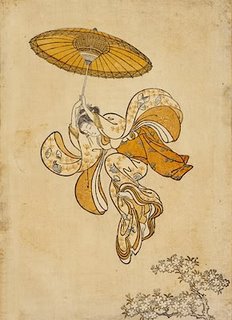 The beauty and functionality of the Zen Clock/Timer makes it a meditation tool that can actually help you "make time" for meditation in your life. Repeating a phrase can reduce your stress
Mumbling to yourself may not be as crazy as it seems. Repeating a mantra–a meaningful word or phrase said silently–can help you cope with the hassles of life, finds a new study from the Veterans Administration San Diego Healthcare System. In it, 66 volunteers were taught to repeat a mantra (sometimes called a mantram) of their choice as often as possible during low-stress activities such as washing dishes or getting ready for bed. The goal was to train their brains to associate the phrase with calmness so they could employ it to counter turmoil. Mantras varied: Some chose words or phrases with religious meanings, while others went secular–one golfer repeated fairways and greens.
Regardless of their choice, the returns were similar:
Six months later, 83% had employed their mantras to help them stay calm, and 75% were able to ease stress, frustration, and tension. “Mantras are a Jacuzzi for the mind,” says lead researcher Jill Bormann, PhD, RN. “And unlike many stress-reduction techniques, you can literally use this anywhere, anytime.”
 Meditation is generally an inwardly oriented, personal practice, which individuals do by themselves. Meditation may involve invoking or cultivating a feeling or internal state, such as compassion, or attending to a specific focal point. “Mindfulness” is the spiritual practice of being aware of your present moment. World famous Zen monk Thich Nhat Hanh has developed the use of a bowl-gong in a practice he calls the “mindfulness bell.” When you hear the sound of the mindfulness bell, you are invited to take a moment to breathe in and out and center yourself in the present. This practice allows the sound of the bowl-gong to periodically connect you to the peace and tranquility that resides inside you right now. This delightful practice reduces stress and improves your overall health.
The Zen Timepiece can serve as a mindfulness bell in two ways: it can be set to strike on the hour (providing an hourly moment of stillness), or it can be set to strike at a programmed interval, such as every 20 minutes, or even every three hours.
adapted from Prevention by By Rachel Meltzer Warren
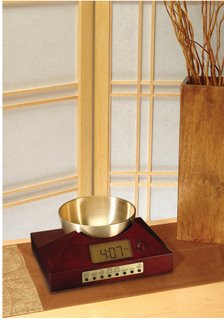 This unique "Zen Clock" features a long-resonating acoustic chime that brings the meditation session to a gradual close, preserving the environment of stillness while also acting as an effective time signal. Now & Zen – The Meditation Timer Shop – Timers & Clocks with Gentle Sounds
1638 Pearl Street
Boulder, CO 80302
(800) 779-6383
orders@now-zen.com
Posted in Meditation Timers, Meditation Tools, mindfulness practice
 “Mindfulness” is the spiritual practice of being aware of your present moment. Try This Technique: Body Scan (10 to 20 minutes)
Lie comfortably on your back, side, or stomach with your eyes closed. Beginning with the toes of your left foot, focus on any sensations (tingling, warmth) you feel there. Now imagine your breath traveling down to your toes, then back up and out through your nose. Slowly move up your left leg, focusing on the sensations you encounter and directing your breath to your ankle, shin, knee, and thigh. Repeat the sequence with your right leg, then move through your lower back, abdomen, upper back, chest, shoulders, and both arms. Next move to your neck, throat, face, the back of your head, and–finally–the top of your head. You should also take notice when you don’t feel any sensations at all.
adapted from Prevention, By Nicola Nieburg
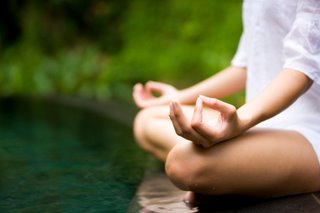 Mindfulness practice, is increasingly being employed in Western psychology to alleviate a variety of mental and physical conditions. Although meditation can be done in almost any context, practitioners usually employ a quiet, tranquil space, a meditation cushion or bench, and some kind of timing device to time the meditation session. Ideally, the more these accoutrements can be integrated the better. Thus, it is conducive to a satisfying meditation practice to have a timer or clock that is tranquil and beautiful.
 The beauty and functionality of the Zen Clock/Timer makes it a meditation tool that can actually help you "make time" for meditation in your life.
Using a kitchen timer or beeper watch is less than ideal. And it was with these considerations in mind that we designed our digital Zen Alarm Clock and practice timer. This unique “Zen Clock” features a long-resonating acoustic chime that brings the meditation session to a gradual close, preserving the environment of stillness while also acting as an effective time signal. The Digital Zen Clock can be programmed to chime at the end of the meditation session or periodically throughout the session as a kind of sonic yantra. The beauty and functionality of the Zen Clock/Timer makes it a meditation tool that can actually help you “make time” for meditation in your life.
Now & Zen – The Meditation Timer Store
 The beauty and functionality of the Zen Clock/Timer makes it a meditation tool that can actually help you "make time" for meditation in your life. Bring yourself back to balance.
1638 Pearl Street
Boulder, CO 80302
(800) 779-6383
orders@now-zen.com
Posted in Meditation Timers, Meditation Tools, mindfulness practice
« Previous Page — « Previous Entries
Next Entries » — Next Page »
|
|
|
|